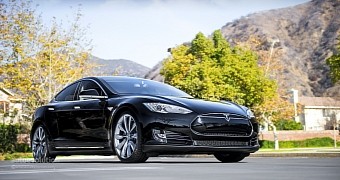Microsoft yesterday announced the new Windows 10, an operating system that brings quite a plethora of improvements for the desktop and tries to make working on a PC easier for those who still rely on a mouse and keyboard as the main input method.
For those who watched Microsoft’s Windows 10 unveiling (those who didn’t can watch it here), you most likely noticed that Redmond promoted the new operating system as a greatly improved version of Windows 7, as it comes with lots of improvements for the desktop, including a Start menu and other changes that would enhance working on the desktop.
Joe Belfiore, who’s now in charge of the smartphone OS business at Microsoft, took the stage yesterday in San Francisco to discuss the way Redmond is making Windows 10 better, explaining that the new OS version comes with all the good things that were part of Windows 7, but also with the new features that would greatly improve working and playing on the same device.
Speaking about the differences between Windows 7 and Windows 10, Belfiore turned to a quite interesting analogy:
“We want all these Windows 7 users to have the sentiment that yesterday they were driving a first-generation Prius... and now with Windows 10 it's like a Tesla.”
“They don't have to learn any new way to drive.”
And his statement more or less makes sense. Windows 10’s desktop features are based on those in Windows 7 and come with improvements for the traditional input method based on a mouse and keyboard.
The Start menu is pretty much the best example, as it comes with the original design available in Windows 7, but also adds modern features such as the live tiles and an advanced search box that was until now available on Windows 8.1 as part of the Bing Smart Search option.
First-generation Toyota Prius vs. Tesla Model S
The first-generation Toyota Prius was quite a successful product and launched in 1997 in Japan with a 58 hp 1.5 gasoline engine and an electric motor that generated 40 horsepower. Needless to say, the first-gen Prius obviously offered limited performance figures, but excelled in terms of autonomy, with EPA figures pointing to a fuel consumption of 42 mpg (5.6 l/100 km) for the improved version.
Tesla Model S, on the other hand, is one of the most appreciated electric cars on the market, mixing state-of-the-art autonomy with impressive performance figures.
The top-of-the-range model comes with a 85 kWh battery manufactured by Panasonic and offering a mileage of 265 miles (425 km) per charge.
In terms of performance, Tesla Model S can easily rival sportscars, accelerating from 0 to 100 km/h (62 mph) in just 4.2 seconds for the top of the range model.
An in-depth testdrive with the Model S was recently made by our friends at autoevolution, so read it for full info.

 14 DAY TRIAL //
14 DAY TRIAL //